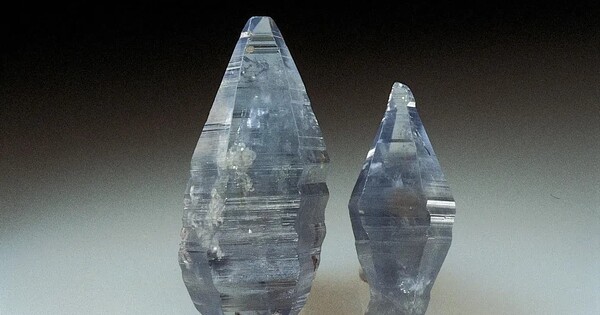Corundum is a crystalline form of aluminum oxide (Al2O3) that usually contains traces of iron, titanium, vanadium, and chromium. It’s a mineral that helps make rocks. It is a naturally transparent material that can change color depending on the presence of transition metal impurities in its crystalline structure.
Sapphires and rubies are formed from the mineral corundum. Sapphires can come in a variety of colors (except red), whereas rubies are uniquely red due to the presence of chrome. Corundum is also utilized as an abrasive in many industrial applications.
Corundum has two primary gem varieties: ruby and sapphire. Rubies are red due to the presence of chromium, and sapphires exhibit a range of colors depending on what transition metal is present. A rare type of sapphire, padparadscha sapphire, is pink-orange.
Properties
Corundum’s hardness (pure corundum is 9.0 on the Mohs scale) allows it to scratch practically all other minerals. It is widely used as an abrasive on sandpaper and big tools for cutting metals, polymers, and wood. Emery, a kind of corundum with negligible value as a gemstone, is widely used as an abrasive. It is a black granular type of corundum in which the mineral is closely associated with magnetite, hematite, or hercynite.
- Color: Colorless, gray, golden-brown, brown; purple, pink to red, orange, yellow, green, blue, violet; may be color zoned, asteriated mainly grey and brown
- Crystal habit: Steep bipyramidal, tabular, prismatic, rhombohedral crystals, massive or granular
- Twinning: Polysynthetic twinning common
- Cleavage: None – parting in 3 directions
- Fracture: Conchoidal to uneven
- Tenacity: Brittle
- Mohs scale hardness: 9 (defining mineral)
- Luster: Adamantine to vitreous
- Streak: Colorless
- Diaphaneity: Transparent, translucent to opaque
- Specific gravity: 3.95–4.10
- Optical properties: Uniaxial (−)
Applications
- Gemstones: When corundum is transparent and has desirable colors, it is cut and polished into gemstones. Ruby and sapphire are the most famous varieties of corundum used in jewelry. Rubies are red due to chromium, while sapphires come in various colors depending on the trace elements present.
- Industrial Ceramics: Corundum is used to produce high-performance ceramics that can withstand extreme temperatures and corrosive environments. These ceramics are used in applications like kiln linings and heat exchangers.
- Electrical Insulators: Due to its high melting point and insulating properties, corundum is used in electrical insulators and substrates for electronic components.
















